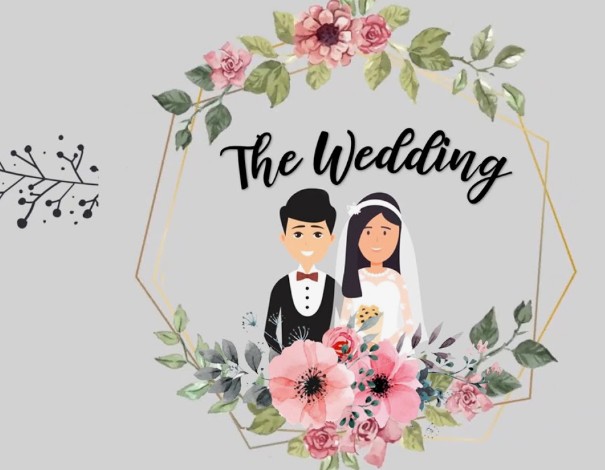How to Address Wedding Invitations to a Married Couple. Sending out wedding invitations is one of the most exciting parts of your wedding planning journey. But when it comes to addressing those elegant envelopes, many couples find themselves asking the same question: How do I properly address a wedding invitation to a married couple?
Whether you’re hosting a traditional ceremony or planning a laid-back celebration, how you address your wedding invitations says a lot about your attention to detail. Don’t worry — it’s easier than it sounds. In this guide, we’ll walk you through the different ways to address wedding invitations to a married couple, from formal to modern, including tips for special cases.
Why It Matters
Before we dive into the formats, let’s take a moment to understand why proper addressing is still important:
- It sets the tone of your wedding.
- It reflects your respect and appreciation for your guests.
- It avoids confusion about who’s invited.
Whether you’re inviting your great aunt and uncle or your best friends who just tied the knot, the way you address their invitation can make them feel genuinely included.
The Basics of Wedding Invitation Addressing
1. Outer Envelope vs. Inner Envelope
If you’re following traditional etiquette and using double envelopes, here’s what each one is for:
- Outer envelope: Contains the full formal address.
- Inner envelope: Lists only the names of the guests (first names or titles, depending on formality).
Note: Modern couples often skip the inner envelope altogether, especially for budget or design reasons. That’s fine — just make sure your outer envelope is clear and respectful.
How to Address Wedding Invitations to a Married Couple
Let’s go over the most common (and modern) ways to address wedding invitations to a couple that is legally married.
📌 1. Traditional Formal (Same Last Name)
Use titles and the shared last name. This is ideal for more formal weddings.
Example:
Mr. and Mrs. David Thompson
123 Oak Street
Chicago, IL 60614
- This format places the husband’s name first.
- It’s traditional but still widely accepted.
Optional Inner Envelope:
Mr. and Mrs. Thompson
. Formal with Both Full Names
If you prefer to include both first names (especially when both partners are close friends or when you’re closer to the wife), this option is more personal while still formal.
Example:
Mr. David and Mrs. Emma Thompson
123 Oak Street
Chicago, IL 60614
- Slightly less rigid than the traditional format.
- Works well if you want to show equal recognition to both individuals.
3. Modern & Equal (Same Last Name)
For more casual or modern weddings, you can simply use both first names with the shared last name:
Example:
Emma and David Thompson
123 Oak Street
Chicago, IL 60614
- Friendly and warm.
- Perfect for informal or modern weddings.
- Works great if the couple are close friends or peers.
📌 4. Married Couple with Different Last Names
In today’s world, it’s not uncommon for a married couple to keep their last names. Here’s how to address them respectfully:
Example:
Mrs. Emma Rodriguez and Mr. David Thompson
123 Oak Street
Chicago, IL 60614
- Always list the person you’re closest to first.
- Use full names and appropriate titles.
- Avoid combining last names unless they share one.
Modern Variation (Informal):
Emma Rodriguez and David Thompson
123 Oak Street
Chicago, IL 60614
This is a warm and personal option — great for contemporary weddings with a relaxed tone.
💡 Quick Tips to Get It Right
✔️ Know Your Guests Preferences
If you’re unsure how your guests prefer to be addressed (especially with hyphenated names, non-binary titles, or professional titles), don’t hesitate to ask.
✔️ Double-Check the Spelling
This might seem obvious, but a misspelt name can feel impersonal. Verify each name and address carefully before printing.
✔️ Avoid Abbreviations
Spell out street names, states, and other address elements fully on formal invitations.
Example:
Use “Illinois” instead of “IL,” and “Avenue” instead of “Ave.”
✔️ Use Proper Titles
Stick to:
- Mr.
- Mrs.
- Ms.
- Dr. (for medical or academic professionals)
If both are doctors:
The Doctors Thompson
or
Dr. Emma Thompson and Dr. David Thompson
Special Cases: How to Handle Them
Same-Sex Married Couples
The same rules apply as with opposite-sex couples — choose formal or casual based on the tone of your wedding.
Example (Formal):
Mr. Michael Johnson and Mr. Robert Smith
123 Cherry Lane
New York, NY 10001
Example (Casual):
Michael Johnson and Robert Smith
You can also use:
The Johnson-Smiths (if they share a hyphenated name)
Couples with Professional Titles
If one is a doctor:
Dr. Emma Thompson and Mr. David Thompson
If both are doctors:
Drs. Emma and David Thompson
or
The Doctors Thompson
This format also applies to military ranks or clergy titles (e.g., Rev., Captain, etc.).
Handwritten vs. Printed Envelopes
Handwritten envelopes are considered more personal and thoughtful, especially for weddings. If you’re hiring a calligrapher or doing it yourself, use black or blue ink and keep the writing clear.
For larger weddings, printed addresses (in elegant fonts) are perfectly acceptable — just make sure the names are accurate and personalised.
Final Thoughts
Addressing wedding invitations may seem like a small detail, but it’s an essential step in showing your guests how much they mean to you. Whether you’re keeping things classic or adding a modern twist, use your invitation envelope as an opportunity to convey warmth, respect, and joy.
